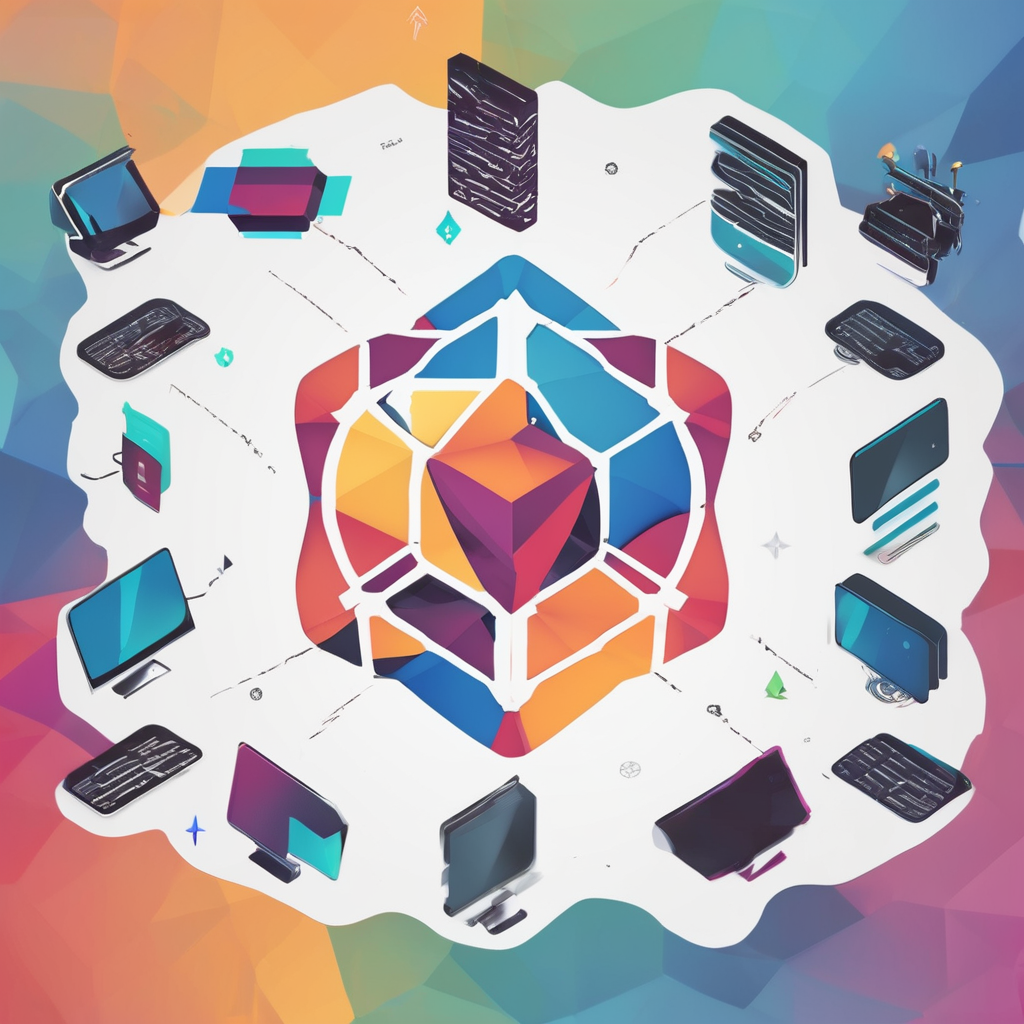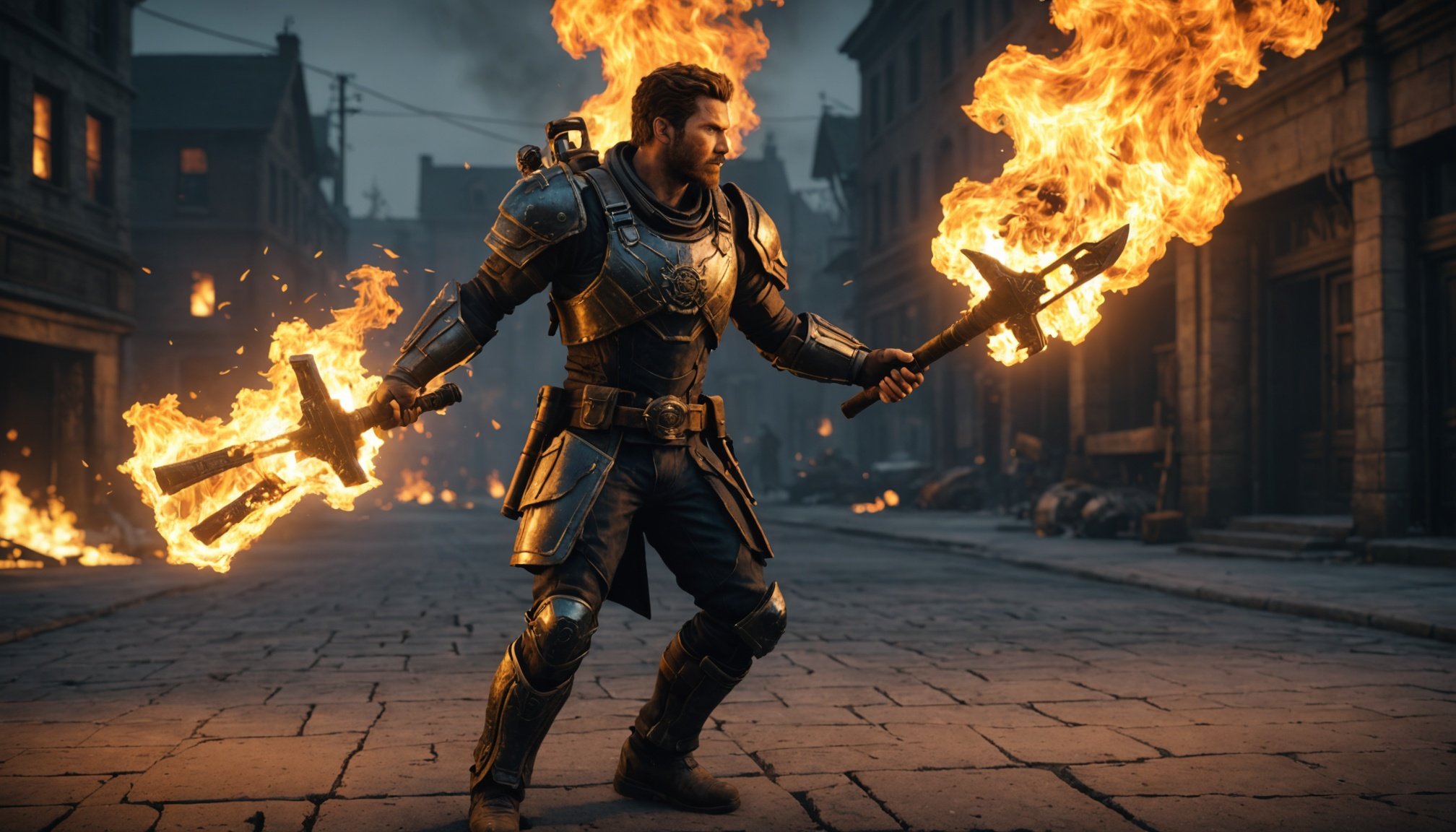Understanding Realistic Fire Effects
Creating realistic fire effects is crucial for enhancing immersion in video games. It is not just a visual spectacle but an essential element that adds depth and authenticity to the gaming environment. When fire effects lack realism, it can break the player’s connection to the game world, reducing the overall experience.
However, developing such effects poses several challenges. One major hurdle is replicating the complex behavior of flames, smoke, and heat, which are fundamentally dynamic and unpredictable. Achieving true-to-life visuals requires a fine balance between artistic skill and computational power, often involving advanced algorithms and real-time rendering techniques.
Also to see : Mastering ai: innovative tactics for developers to create engaging and immersive in-game experiences
Key Concepts in Fire Behavior and Dynamics
Understanding fire dynamics is key to crafting believable visual effects. Fire exhibits specific behaviors, such as flickering, shifting hues, and fluctuating intensities. These attributes are influenced by variables like fuel type, airflow, and temperature. Moreover, the interplay between light and shadow, plus the refraction and reflection of heat, plays a significant role.
To tackle these challenges, developers employ techniques such as particle systems and physics-based simulations. By accurately mimicking real-world scenarios, they can offer players an experience that is both visually stunning and emotionally engaging, deepening their immersion in the game.
Have you seen this : Enhancing realism in social simulation games: how ai transforms authentic character interactions
Techniques for Creating Fire Effects
Designing compelling fire effects in digital media requires a blend of artistry and technology. The foundation lies in understanding fire effect techniques which often involve procedural fire methods for authenticity and realism.
Particle Systems
One of the primary methods to create fire is using particle systems. These systems simulate flames by generating numerous small particles that mimic the chaotic nature of fire. By designing dynamic particles for motion, creators can produce a believable flame appearance. Key to this technique is controlling the velocity, size, and lifespan of each particle to emulate realistic fire behavior.
Texture and Color Gradient
Implementing texture and color gradients adds depth to fire effects. Gradients can simulate the varying heat within a flame, with colors ranging from deep reds at the base to bright yellows and whites at the hottest points. This gradual shift in color mimics how real fire emits light at different temperatures, enhancing visual authenticity.
Using Light and Shadow
Another critical aspect of realistic fire effects is the strategic use of light and shadow. Adjusting light sources to create a believable flicker effect requires nuanced changes in light intensity and direction. This not only enhances the fire’s realism but also impacts the surrounding environment, casting dynamic shadows that move with the flicker of the fire.
Shader Programming for Fire Effects
Shader programming is a powerful tool in the realm of computer graphics, particularly when crafting realistic fire effects. At its core, shader programming involves writing small scripts that determine how graphics are rendered on the screen. For fire effects, the shaders simulate aspects like flames and smoke, offering gamers thrilling and immersive experiences.
Creating fire shaders involves understanding various fundamentals. A flame shader typically incorporates parameters such as color gradients, noise patterns, and transparency to mimic flickering movements and fiery hues. For smoke shaders, you’ll want to work with particle systems and gradients to replicate the fluid, wispy nature of smoke, while considering physical properties like diffusion and fading.
In the fast-paced environment of action games, optimizing these shaders becomes crucial. Performance can be enhanced by reducing computational demands, especially on graphics processing units (GPUs). This can be achieved through techniques like LOD (Level of Detail) scaling, whereby the complexity of shaders adjusts according to the player’s proximity to the fire effect, conserving resources when details aren’t necessary.
By mastering the nuances of shader programming, developers can create visually striking fire effects while maintaining optimal game performance.
Case Studies of Fire Effects in Popular Games
Exploring the intricacies of fire effects in games provides valuable insights into the evolution and refinement of visual experiences. With game examples drawn from various genres, the role of fire can dramatically change the immersion and realism of these digital environments.
Critique of Fire Effects in Specific Titles
The fire effect case studies shed light on both the strengths and shortcomings of specific games. For instance, in some critically acclaimed games, fire effects are so meticulously detailed that they enhance the narrative, creating a truly immersive atmosphere. However, other titles may suffer from unrealistic or shallow effects, diminishing player engagement and realism.
Innovation in Fire Simulation Engines
The development of state-of-the-art simulation engines has propelled fire rendering to new creative heights. These engines allow developers to push boundaries, offering complex and dynamic fire behavior. Such innovations not only enrich the visual storytelling but also set new standards for future game development.
Comparison of Traditional vs. Real-Time Rendering
Traditional rendering techniques often involve precomputed fire effects, which, while visually appealing, lack responsiveness. In contrast, real-time rendering offers dynamic and interactive visual experiences, crucial for player immersion. However, the trade-off between visual fidelity and computational performance is a key consideration in adopting either approach.
Best Tools and Engines for Fire Effect Creation
Creating realistic fire effects in digital environments can enhance the immersive experience of any game. Game engines like Unity and Unreal Engine are widely acknowledged for their capabilities in constructing visual effects. Both offer robust rendering systems and community resources that support developers in achieving lifelike fire creations.
Many developers lean on plugins such as Houdini and the VFX Graph within Unity to simulate elaborate fire effects. These external tools integrate smoothly with game engines, offering advanced features that might not be available natively.
Moreover, many community resources provide a wealth of tutorials, sample projects, and forums where developers can learn and share insights. Websites like ArtStation and forums on Reddit have collections of user-generated materials that are immensely useful for brushing up on skills or troubleshooting.
Interactive lessons and video tutorials can break down complex topics into more digestible segments, making it easier even for beginners to grasp the nuances of fire simulations. Whether using custom shaders or experimenting with physics-based effects, there is an abundance of techniques to master.
Visual Demonstrations and Tutorials
In the realm of fire effect tutorials, visual demonstrations offer an engaging way to grasp complex techniques. By blending instructional content with interactive elements, users can better appreciate the intricacies involved in creating life-like fire effects.
Step-by-Step Video Tutorials
Step-by-step video tutorials are an invaluable resource for learners. They meticulously guide viewers through the process, making the techniques accessible regardless of previous experience. Each video typically begins with an overview, followed by detailed explanations and tangible examples, offering a reliable approach to mastering fire effects.
Project Files for Experimentation
To facilitate hands-on learning, downloadable project files are offered for experimentation. These files allow users to tweak settings and observe the results in real-time. Experimenting with different parameters aids in understanding how minor adjustments can significantly alter the final outcome.
Community Contributions and Resources
Community contributions greatly enhance the learning experience. A curated collection of community resources, including modifications and additional assets, encourages exploration. By interacting with fellow enthusiasts, users can exchange insights and broaden their skills. Access to these supplemental materials fosters a collaborative learning environment where shared knowledge benefits all participants in their creative journey.











